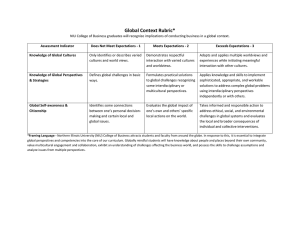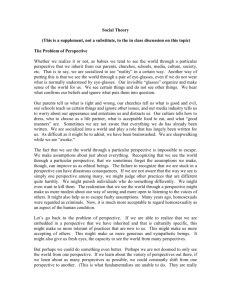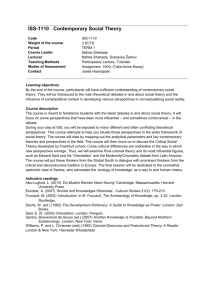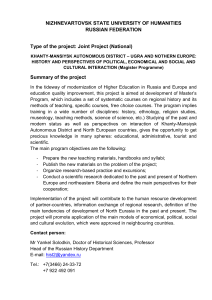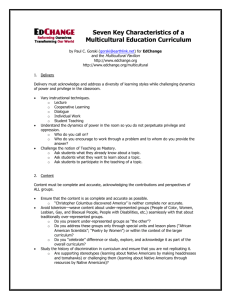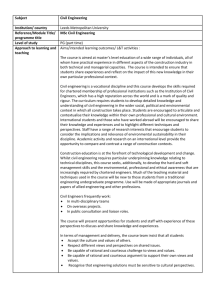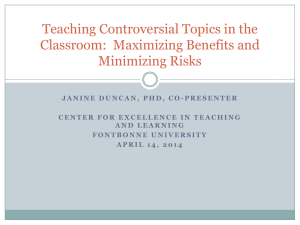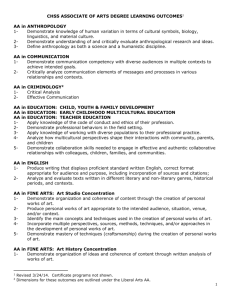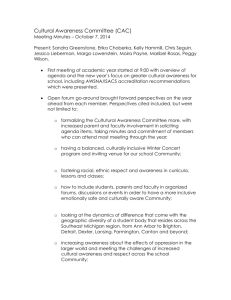Document
advertisement
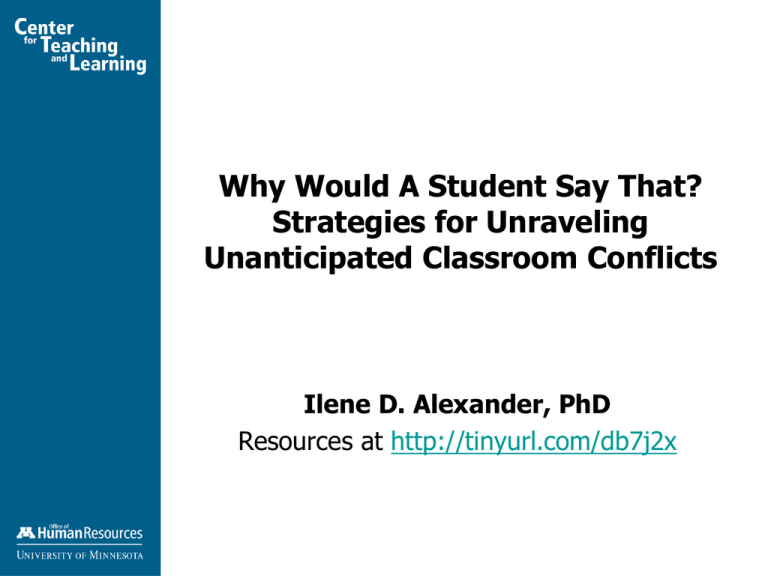
Why Would A Student Say That? Strategies for Unraveling Unanticipated Classroom Conflicts Ilene D. Alexander, PhD Resources at http://tinyurl.com/db7j2x Goals of this brief session: Gain an understanding of “flashpoints” Review frameworks for understanding & resolving classrooms conflict / hot moments Practice – through review of cases – ways of assessing a classroom situation by generating possible responses, then selecting a plan of action with follow up assessment What Is Multicultural Learning? Sustaining Multicultural Learning involves creating classroom climates in which students and teachers can acknowledge and address the discomfort of working across boundaries, learn how to respond to difference and grow intellectually and personally as a consequence. To make multicultural learning both possible and effective, instructors must structure classroom interactions to be respectful & challenging, creative & meaningful, engaged & transformative. In such an environment, inaccuracies, mistakes, hasty generalizations, intolerance are addressed with honesty and care. Shifting Perspectives The work of a teacher involves (1) development of critical thinking skills, so that students understand how to organize data, analyze, synthesize, evaluate, and draw conclusions; (2) recognition of meaning attribution and the power that emotions, values, and personal experience have in shaping one's interpretation of information. “Bridging Emotion & Intellect” Jane Fried. College Teaching: Fall 1993. Shifting Perspectives The professor, therefore, becomes responsible for teaching students three sets of skills: first is separating facts from cultural assumptions & beliefs about those facts second is teaching students how to shift perspective third is perhaps the most difficult to learn, that of differentiating between personal discomfort and intellectual disagreement Shifting Perspectives Learning Is Uncomfortable / Dissonant Cognitive development: Dualism (All things are right/wrong, black/white.) Multiplicity (Everyone is right…no one is wrong.) Relativism (Well, everyone has his/her own opinion and could be equally right.) Commitment to Relativism (Some ideas are more right that others. One has to look carefully at the claim, supporting evidence, and other factors.) Perry and Belenky, et al Shifting Perspectives Jackson/Hardiman Model of Social Identity Development Social identity development theory describes attributes that are common to the identity development process for members of all target and agent groups…. In reality most people experience several stages simultaneously, holding complex perspectives on a range of issues and living a mixture of social identities. This developmental model can be helpful in understanding student perspectives and selecting instructional strategies, but we caution against using it simplistically to label people. Diversity Flashpoint … involves a difficult interpersonal situation during a faculty-student interaction that originates from an area of identity difference (e.g., race, ethnicity, gender, sexual orientation, class, ability/disability, language or linguistic ability, religion, age, size, family structure, geographic origin). Flashpoints – Perceptual Filters We can anticipate having such differences due to a number of factors that create "perceptual filters" that influence our responses to the situation: Culture, race, and ethnicity Gender and sexuality Knowledge (general and situational) Impressions of the Messenger Previous experiences Conflict Conflict resolution involves series of steps including: Listening Finding common interests Reaching an agreement Creative response Empathy/Internal Civility Appropriate assertiveness Cooperative power Managing emotions Willingness to resolve Mapping the conflict Development of options Broadening perspectives Brainstorming possible solutions to the problem Considering multiple views of proposed solutions
